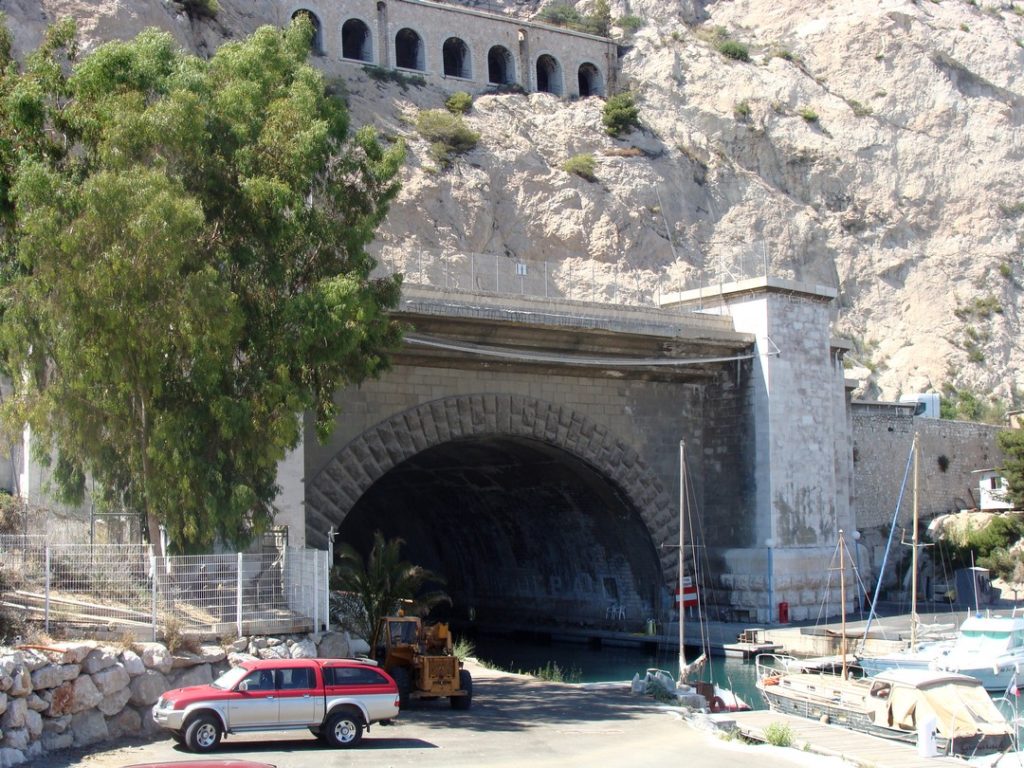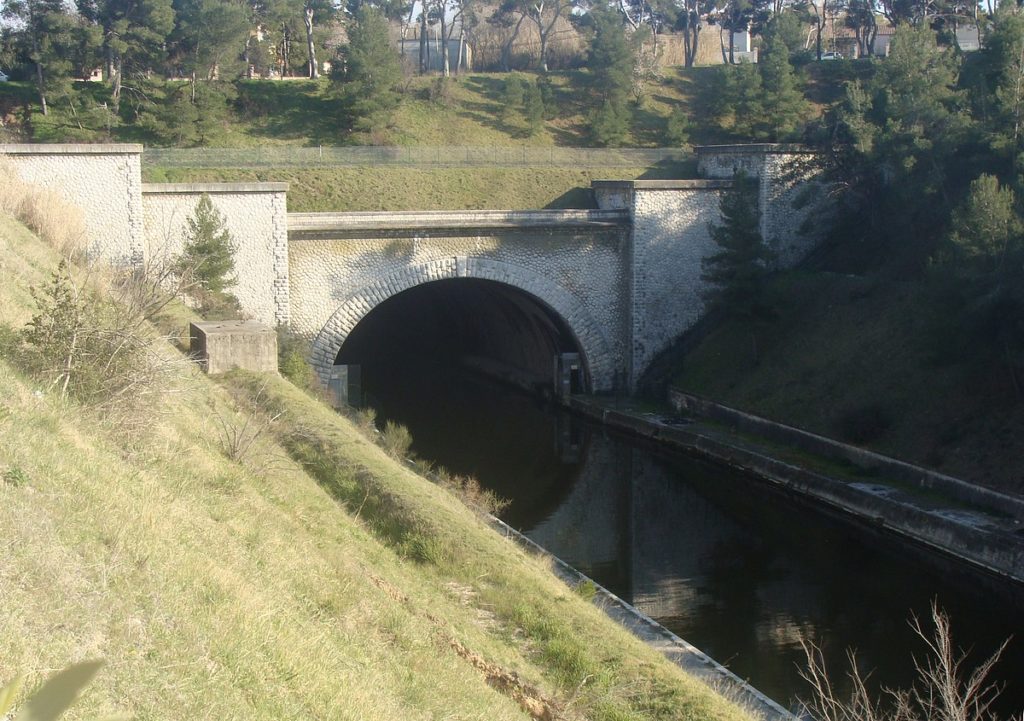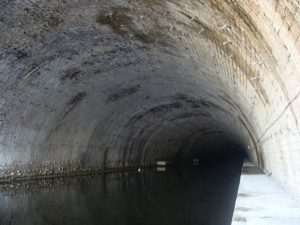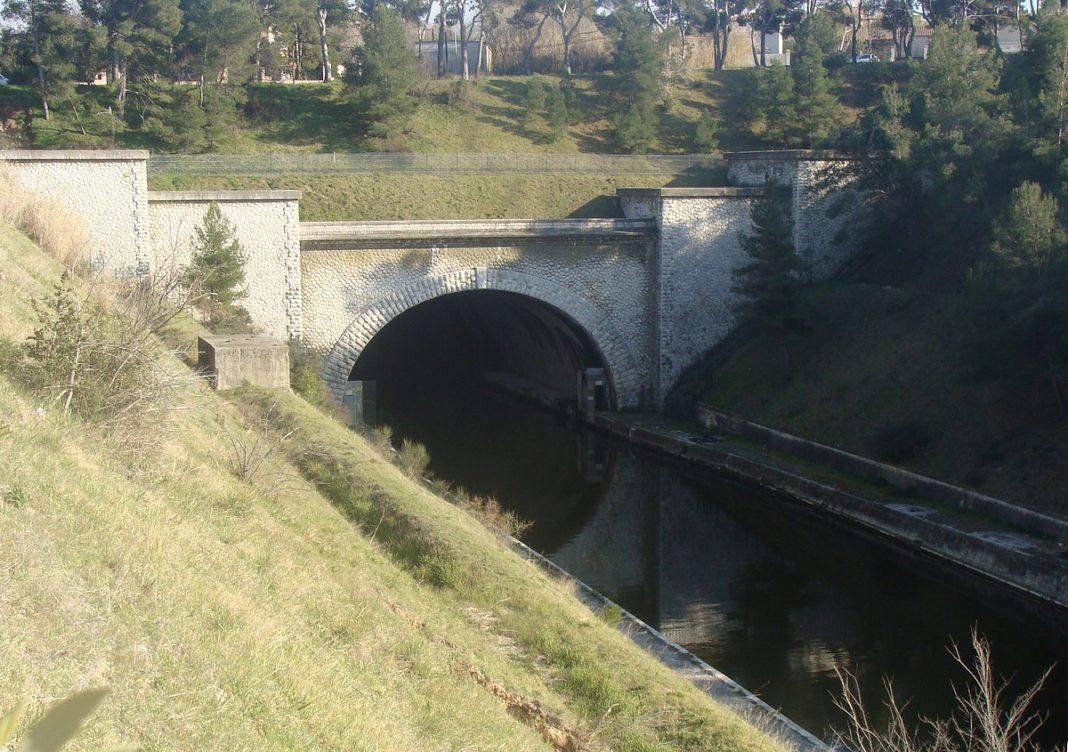The Rove Tunnel is a canal tunnel in France that connected Marseille to the Rhône river. It was opened in 1927 and closed in 1963. With a length of 7,120 meters, it was a major work of civil engineering and one of the longest such tunnels.

Underground work began in 1910, using compressed air hammers to break through the rock. The contractor simultaneously worked from the south and from the north, and on a ventilation tunnel. Geological studies had not indicated any aquifer, but in fact, the work was seriously affected by various irruptions of water. Work accelerated after the declaration of World War I on 1 August 1914. The laborers included Spanish and Portuguese, who replaced Italians recalled to their country at the outbreak of war, and prisoners of war. After many delays, the full canal was finally opened to traffic in April 1927.

The tunnel was the most challenging section of the Canal de Marseille au Rhône, which connected Marseille to the Rhône river. The canal has a total length of 81 kilometers. The tunnel starts near the village of Le Rove and provides a sea-level passage through the 278 m maximum altitude Chaîne de l’Estaque. The tunnel is 7,120 m long, 22 m wide and 11.4 m high. The water depth is 4 m. It remains the biggest canal tunnel in the world, as far as shipping canals are concerned. As a part of the Canal de Marseille au Rhône, it is used to connect the Étang de Berre in the north with L’Estaque in the south, both hosting a part of Marseille’s harbor.

According to Wikipedia














